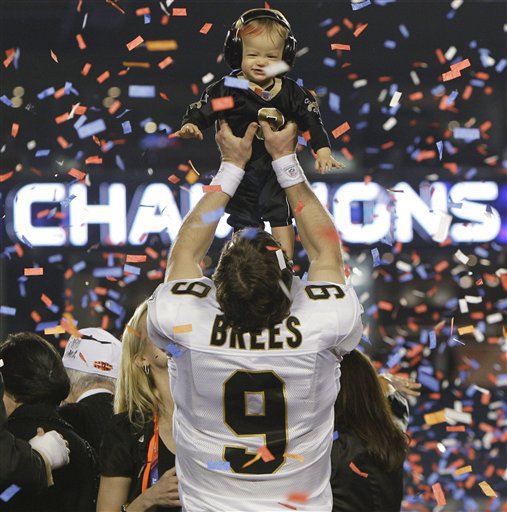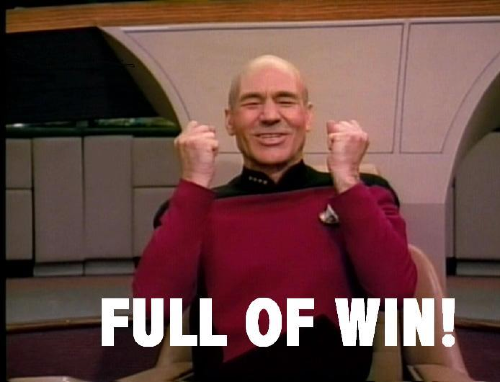Eat Louisiana Seafood!
You may have noticed a certain lack of activity ’round these parts for the last couple of weeks. This is because I was back home as usual for the New Orleans Jazz and Heritage Festival, which was great as always (and I’ll have recaps, plus a “good, bad and ugly” post later on). I did have a bit of guilt during Fest, though, because I let it distract me and keep my mind off the very bad things happening in the Gulf of Mexico.
You’re undoubtedly aware of the oil rig explosion that killed 11 people, sank an offshore rig and resulted in oil gushing from drill points on the gulf floor. This is being called an “oil spill,” which is a bit of a misnomer. What the Exxon Valdez did was spill oil; this is a runaway oil well, spewing petrolem from an 18,000 foot well that’s situated a mile below water. No matter what, it’s going to be an environmental disaster, we just don’t know how bad yet. Currently it’s spewing about 210,000 gallons of oil a day, with the remnants of the wellhead and kinked piping (like putting a kink in a garden hose) restricting the current flow to this level. A high-producing well in the Gulf can produce 30,000 barrels (or 1,260,000 gallons) a day, but that’s under control. Worst-case scenarios posit an Exxon Valdez-sized spill every nine or ten days, but we’re nowhere near that yet and we hope we never will be. The scary thing is that we just don’t know. No one knows how bad it’ll get, if the kinks will let go and increase the flow, if they’ll be able to get capping done or relief wells drilled fast enough. Lots of livelihoods are in limbo right now.
One thing people are scared about is the impact to Louisiana seafood, not only to the livelihoods of fishermen but to our seafood-eating way of life in Louisiana. The good news so far is that there’s no need to panic. Seafood is currently safe and plentiful, and while a certain number of oyster beds have been closed east of the mouth of the Mississippi as a precautionary measure, most of the oyster beds and seafood producing regions are west of the Mississippi, and they’re not being affected.
Chef Brian Landry of Galatoire’s restaurant released the following facts via a Tales of the Cocktail newsletter:
Guests at Galatoire’s and other restaurants in New Orleans can continue to enjoy local seafood for the foreseeable future.
Safeguards are in place to know where our fresh fish and shellfish are caught and harvested along the Louisiana coast and in the Gulf of Mexico. As we have for 100+ years, our chef and waiters are happy to suggest the freshest seafood that we have available and answer any questions our guests have.
Galatoire’s requires all of our seafood purveyors to provide a “trip ticket” identify the geographic areas where all of our seafood is caught, in accordance with the Louisiana Dept. of Wildlife and Fisheries’ guidelines. These requirements increase the accountability that our fishermen and other purveyors have with us and with the state of Louisiana.
Nearly 80 percent of Louisiana’s seafood comes from hundreds of miles of coastline west of the Mississippi River, hundreds of miles away from the affected areas of the Gulf of Mexico.
Galatoire’s is working around the clock with our seafood producers to ensure that we provide our guests with the freshest fish, shrimp, crawfish and crabs available. We will be able to serve our guests their favorite dishes as we have for decades.
Fish and shellfish migrate away from water hazards. As a result, these species will move toward cleaner waters and safety.
New Orleans is located more than 100 miles inland from the Louisiana coast. We are enjoying one of the busiest weekends of the year. Anyone with plans to visit our great city and restaurant should keep those plans and come see us.
After reports that some oyster beds were being closed, long lines formed at the raw oyster bar in the Grandstand at Jazzfest, with people thinking that it might be their last chance for a while. Then there was a little flap in which an employee at Parkway Bakery and Tavern (hands down my favorite po-boy joint in the world) put up a sign that oysters were being taken off the menu due to the oil spill. That was a temporary price move rather than a safety move — owner Jay Nix sees the price of oysters spiking, doesn’t want to charge more than the current $13 for a large oyster po-boy and doesn ‘t want to have to short his customers by putting fewer oysters on a sandwich. The sign that went up was both poorly worded and unauthorized. It still makes me sad that Jay isn’t serving oysters right now — I’d be happy to pay a little extra for a while, me. In fact, we had a fantastic fried oyster po-boy at Parkway just last week. But there’s certainly a lot of concern over what’s happening.
Here’s the deal with oysters right now, from one of the best and best-known purveyors of oyster dishes in the city — Tommy Cvitanovich, of Drago’s Restaurant. He had this to say:
Louisiana has 7,721 miles of tidal coastline. The area east of the Mississippi River which is closed is where 23% of the state’s total seafood is harvests are landed. The west side of the river remains safe and open is where 77% of the harvests are landed. With 77% of our waters untouched, we are still able to serve Louisiana Seafood that are clean and unaffected by the BP oil spill.
Louisiana produces 33% of the nations seafood (excluding Alaska and Hawaii)
Louisiana is the nation’s number one producer of oysters, shrimp, crawfish and blue crab.
Oyster beds are located at least 25 – 50 miles inland from the Louisiana coast. For east bank oyster beds to be affected, the oil has to travel thru miles of bayous, canals and bays
Currently only 22% of Louisiana’s oyster beds are closed as a precaution. This is a good proactive move.
No oyster beds are currently being tainted by the oil.
These beds will not be reopened till it is determined that environmental conditions are within requirements specified by the National Shellfish Sanitation Program.
Only 30% of Louisiana’s oyster beds are east of the Mississippi River. Which means 70% of our oyster beds, which are to the west of the Mississippi River are safe and open.
NOAA (National Oceanic Atmospheric Administration) has said at this point that they do not expect the oil to affect Louisiana coastline west of the Mississippi river. This is GREAT NEWS!!!
90% of Louisiana shrimp come from parts west of the Mississippi River
Shrimp, crabs, and most fin fish swim away from danger – a scent of oil in the water is considered a danger. At this point these fisheries should be fine.
We’ve been eating seafood like crazy for the last two weeks — plump shrimp and fat juicy oysters and Gargantuan crawfish and astonishing soft shell crabs — and it’s all been fantastic.
Get out there and eat some great Louisiana seafood. And keep your fingers crossed that they cap that well as soon as possible.








